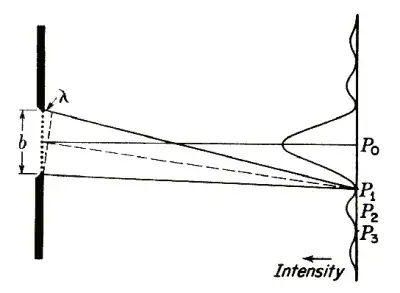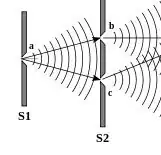Have a look on the sketch
To get such a intensity distribution of light behind a slit we presuppose that all the light that moves on the two lines is coherent; of the same wavelength AND the same phase. Otherwise we shall get a blurred spot without fringes behind a slit.
To get the best interference pattern one has to use monochromatic light. Coherent light is not necessary and does not bring higher quality fringes. So I wondering, how the radiation gets coherent during the transition of a slit.
Edit after Anna's answer.
The usual light sources are not point-like sources. An extended light source shows the same effect as two point-like sources: you get overlapping fringes pattern behind the slits, the intensity pattern becomes blurry. So the light source has to be transformed to a point-like source. This happens by the help of an auxiliary slit between the light source and the slits.
For this picture Anna wrote: "Incandescent light is incoherent because it comes from many sources and the same is true for sunlight. By passing the light through the one slit he created a single coherent wave front." So my question stays unanswered. What makes the radiation behind a slit coherent?

